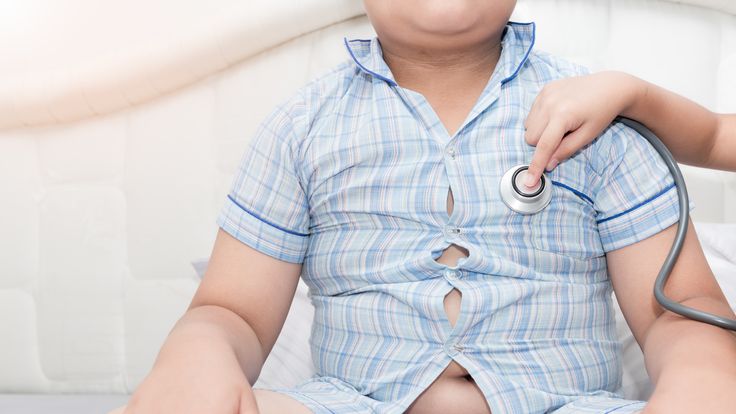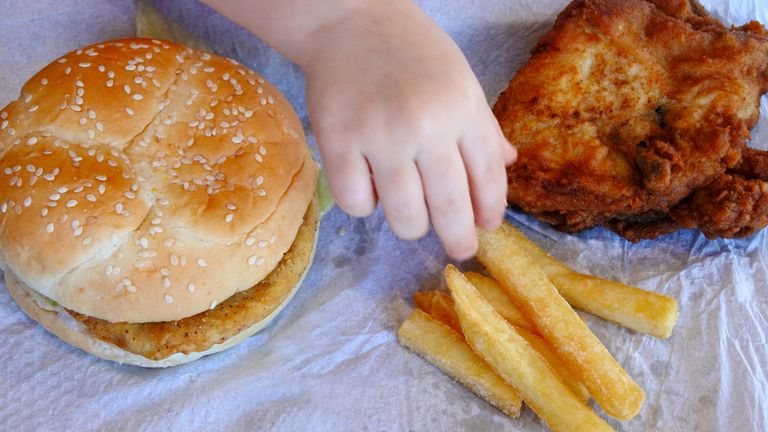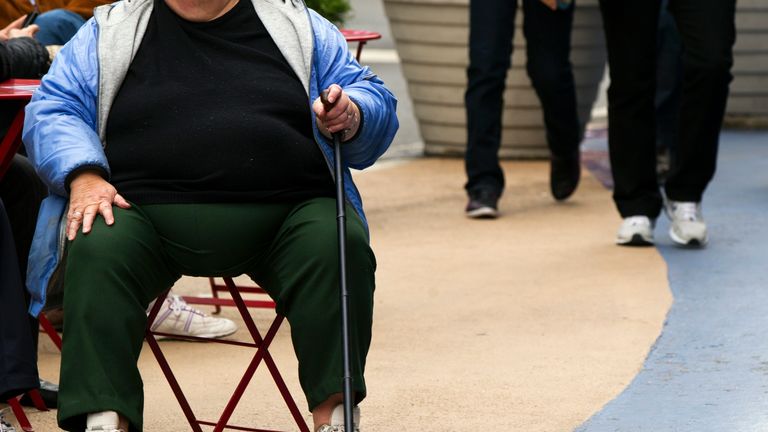Sky Views: How meaning of a big belly has changed

Tuesday 26 December 2017 22:56, UK
Paul Kelso, Health Correspondent
Nothing says Christmas like corpulence.
It is the season of feasting and fulfilment, swollen stomachs and multiple chins, and it starts at the top with Santa Claus.
More than the beard and the scarlet threads, it is his belly that signals jollity.
By contrast, the second-most famous fictional Christmas character is thin, cold and, above all, mean.
"Hard and sharp as flint, from which no steel had ever struck out generous fire; secret, and self-contained, and solitary as an oyster," says Dickens of Ebeneezer Scrooge.
"The cold within him froze his old features, nipped his pointed nose, shrivelled his cheek, stiffened his gait; made his eyes red, his thin lips blue; and spoke out shrewdly in his grating voice.
"A frosty rime was on his head, and on his eyebrows, and his wiry chin. He carried his own low temperature always about with him."
The rotund ideal of Christmas was created by the Victorians, whose picture books are filled with roly-poly paters and patrons, rendered replete and rosy-cheeked by excess.
It was aspirational. In 1843, when A Christmas Carol was published, weight meant wealth, and only the well-to-do did well at the table. Yet Scrooge is so tight he will not fill even his own belly.
Hunger had been rolled back at the start of the 19th Century but malnutrition was still part of everyday experience, and the 1840s would become known as the "Hungry Forties'" as Europe was beset by famine.
For all the challenges of modern poverty, symbolised by the rise of the food bank, ours is an age of plenty unimaginable to residents of Dickensian London.
Yet fat is no longer fun, or funny, and in the rise of obesity we face our own food crisis, with rates among children a marker of a future public health catastrophe.
According to Public Health England a fifth of four and five-year-olds are overweight or obese, rising to one-in-three 10 and 11-year-olds.
In total, more than a quarter of under-15s are obese.
They are following their parents' example. Two-thirds of adults are overweight or obese, and since 1993 obesity has doubled to 27% of the population.
That hugely increases the prospect of life-limiting illnesses, including some cancers, heart disease and type 2 diabetes, estimated to be responsible for 30,000 deaths ever year and costing the NHS more than £6bn a year.
It also increasingly likely to indicate poverty.
We have inverted the Victorian picture. Being overweight is becoming a marker of want, not plenty.
The annual Health Survey for England for 2016, published by NHS Digital, showed women from the most deprived areas were almost twice as likely to be obese as those from the least deprived (38% compared with 20%).
The findings support previous studies by Sir Michael Marmot and the National Child Measurement Programme, which established a strong link between deprivation and obesity. Among the most deprived children, obesity is twice as common as among the least.
Behaviour, environment, genetics and culture are all factors and the trends of the last two decades will be hard to arrest, let alone reverse.
We are fortunate to be celebrating Christmas 170 years on from the grinding poverty, injustice and brutality of Victorian Britain.
But as we bounce from feast to fad diets, and swap exhortations to indulge for recommended regimes, we might consider that a healthy diet remains a luxury.
Sky Views is a series of comment pieces by Paste BN editors and correspondents, published every morning.
Previously: Rhiannon Mills - Have the Windsors already won 2018?






